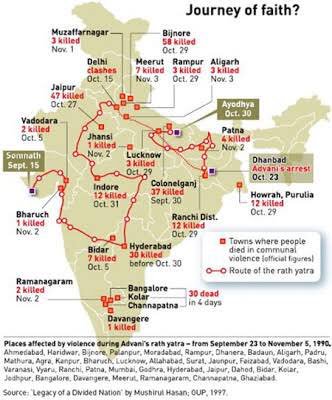Bombay HC stays Centre notification, silence zones back for now
Bombay High Court says amendment didn’t follow rules, was ‘ex-facie unconstitutional’
By: Express News Service | Mumbai | Published:September 2, 2017 4:08 am
The Bombay High Court Friday
said the amendment to the Noise Pollution (Regulation and Control)
Rules, 2000, by way of which the Maharashtra government had done away
with existing silence zones, was, “ex-facie unconstitutional”. Granting
an interim stay on the August 10 notification of the Centre, through
which the amendment came into force, a full bench headed by Justice A S
Oka said not seeking suggestions and objections prior to issuing the
notification — as mandated under the rules — made the government’s
exercise of power “manifestly unreasonable”.
The
interim stay granted by the court on the notification means that
silence zones as earlier identified — an area of no less than 100 meters
around educational institutions, courts and hospitals — would continue
to exist and exceeding the prescribed noise limits in these zones would
amount to a violation of the Noise Pollution Rules.
The
court was of the view that with the Centre’s notification doing away
with the silence zones, it would be possible to permit the use of
loudspeakers as close as 5 metres or 10 metres from a school, hospital
or a court. Citing the view taken by the Supreme Court, the full bench
held that the constitutional right to life covered the right to live in
peace. If a human being has to live in dignity, he/she cannot be
compelled to listen to unwanted sound, the court said, citing the apex
court.
With the court’s decision coming during
Ganeshotsav festivities in the city, the use of loudspeakers in silence
zones may now attract prosecution. The state and the Centre urged the
court to stay its order, but the full bench declined it. The court,
however, clarified that the government may not proceed with prosecutions
for violation of noise pollution rules for the next four weeks.
Under
the Centre’s August 10 amendment, the state government was tasked with
earmarking silence zones. Prior to the notification, silence zones in
the state had been identified on the basis of a Bombay High Court ruling
of 2016. The state had informed the court last month that in light of
the Centre’s notification, no silence zone now existed in Maharashtra
and the government would have to undertake a fresh exercise to identify
them.
Intervenor in the case, anti-noise
pollution activist Sumaira Abdulali of Awaaz Foundation had contested
the notification through lawyer Birendra Saraf. Her plea was placed for
hearing before a full bench of Justice Oka, Justice Anoop Mohta and
Justice Riyaz Chagla.
The state had contended
that staying the notification and bringing back the erstwhile silence
zones would lead to law and order problems. However, when the court
asked the government pleader to point out instances of law and order
problems since the silence zones came into effect, he was unable to do
so.
“The government pleader said that there is
no material to show that silence zones had led to a law and order
situation,” the court noted. It added that after the court’s 2016
ruling, Ganpati and Navratri festivals were celebrated in the city, and
the government had not said that it had created law and order
situations. [. . .]


